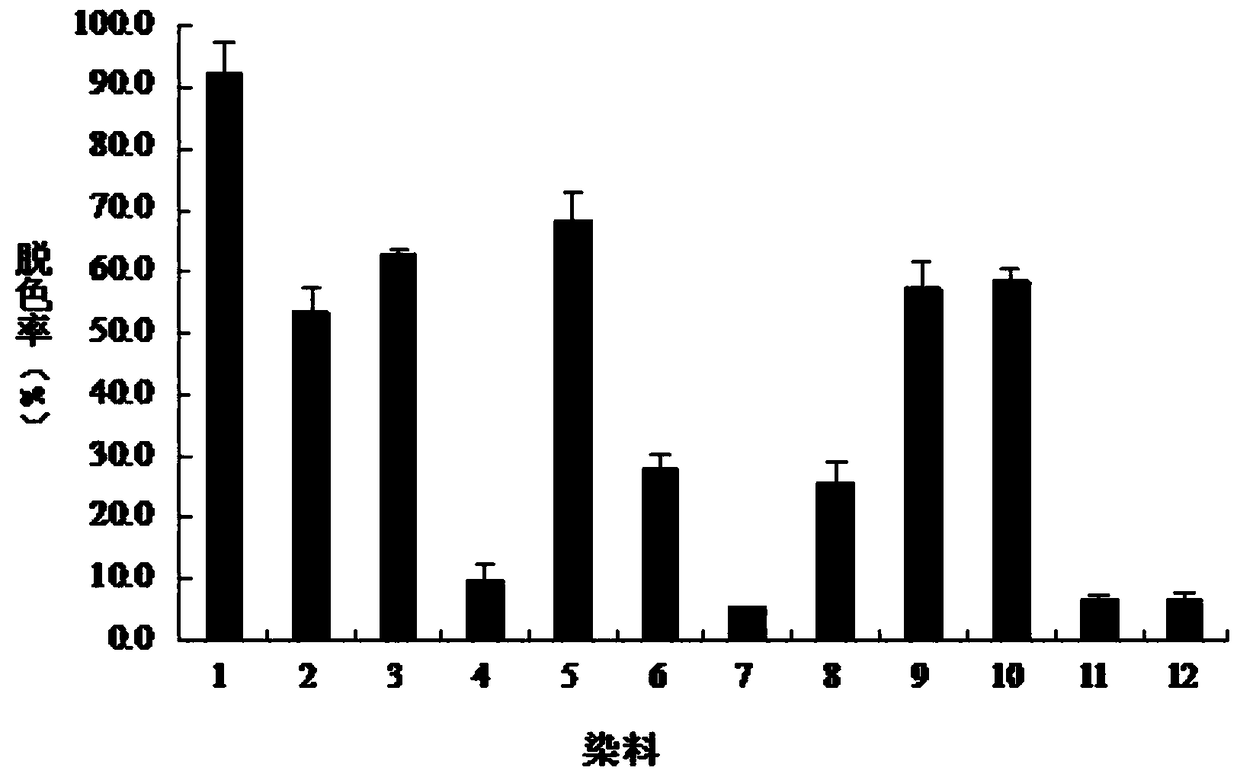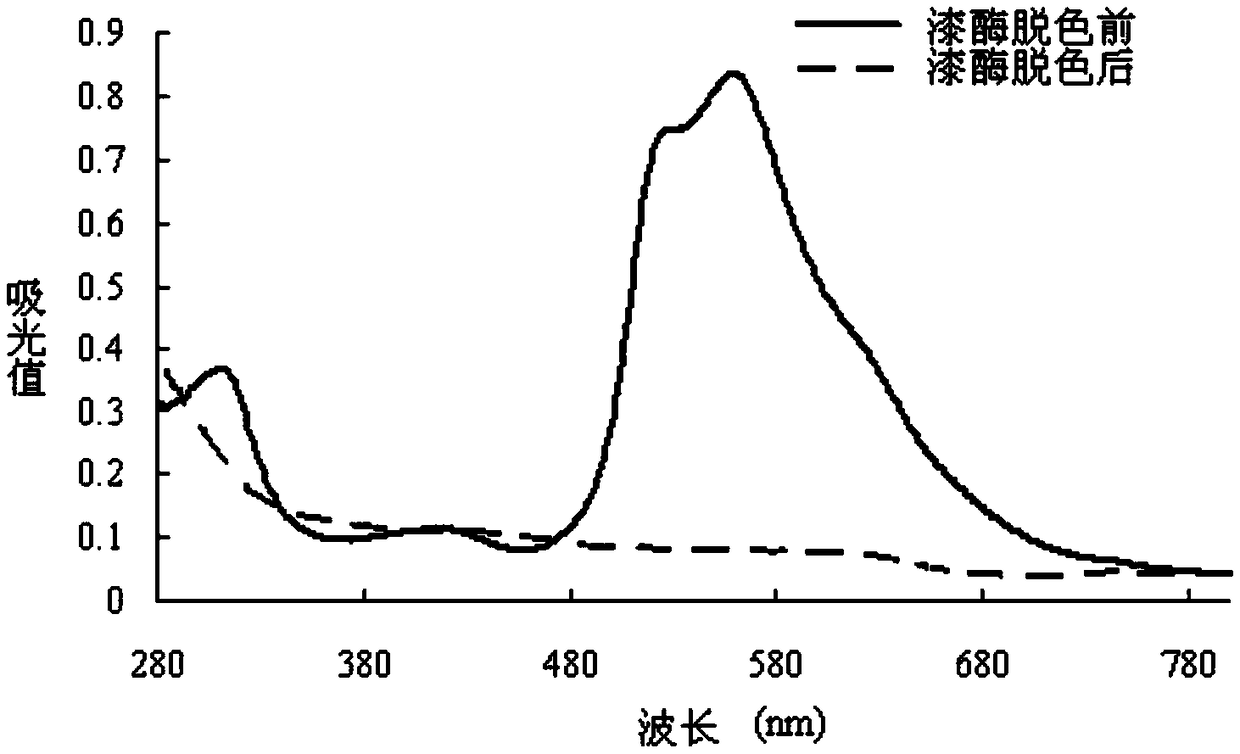Application of laccase in decolorization of protein gel
A protein gel and laccase technology, which is applied in the application field of laccase in protein gel decolorization, can solve the problems that the study of dye wastewater decolorization is limited to aqueous environment, long decolorization time, and a large amount of waste liquid, etc., and achieves good decolorization. Effect, operation green environmental protection, energy saving effect
- Summary
- Abstract
- Description
- Claims
- Application Information
AI Technical Summary
Problems solved by technology
Method used
Image
Examples
Embodiment 1
[0043] Embodiment 1HYB07 laccase to the decolorization of different dyestuffs
[0044] (1) HYB07 laccase was used for 12 different dyes (Coomassie Brilliant Blue R250, Methyl Orange, Methyl Red, Basic Fuchsin, Bromothymol Blue, Neutral Red, Crystal Violet, Acid Fuchsin, Congo Red , bromocresol green, methylene blue, rose bengal B) decolorization. Decolorization system 2mL, containing 50mM citric acid-disodium hydrogen phosphate buffer (pH 6.0), dye (25-200mg / L) and enzyme (2U / mL), decolorize at room temperature for 24h. from figure 1 It can be seen that after laccase treatment, the decolorization rate of Coomassie Brilliant Blue is the highest, reaching 92.37%.
[0045] (2) Full-wavelength scanning of Coomassie Brilliant Blue R250 solution before and after laccase decolorization. from figure 2 It can be seen that the absorption peak of the dye decreases after decolorization.
Embodiment 2
[0046] Embodiment 2 utilizes laccase / mediator system to carry out the decolorization of protein gel
[0047] (1) Effect of Mediator Types on Protein Gel Decolorization
[0048] Under the condition of pH 7.0, 20U / mL laccase, detect different laccase mediators, including ACE (20μM), SYA (20μM), HBT (20μM), ABTS (2μM) and SYD (20μM) for protein gel decolorization Impact. from image 3 It can be seen that ABTS has the best effect as a mediator.
[0049] (2) Effect of temperature on protein gel decolorization
[0050] Under the conditions of pH 7.0, enzyme concentration 20U / mL, and ABTS 2μM, the effects of different temperatures (20°C, 25°C, 30°C, 35°C, 40°C, 45°C) on the decolorization of protein gels were studied. from Figure 4 It can be seen that 40°C is the optimum temperature for decolorization.
[0051] (3) Effect of laccase activity on protein gel decolorization
[0052] Under the conditions of pH 7.0 and temperature 40℃, the effect of laccase activity (3U / mL, 6U / mL,...
Embodiment 3
[0057] The detection sensitivity of embodiment 3 laccase / mediator decolorization system
[0058] (1) Decolorize for 2 hours under the conditions of pH 7.0, temperature 40°C, laccase activity 15U / mL, and ABTS 2μM, and detect the detection sensitivity of the laccase / mediator decolorization system. from Figure 8 It can be seen that BSA can still be detected as low as 10ng.
[0059] (2) Compare the effects of different decolorization methods. from Figure 9 It can be seen that the decolorization effect of the laccase / mediator decolorization system is the best, and there is little difference in the preparation of the decolorization solution with buffer or distilled water. Boiling with water directly for decolorization may easily cause loss of protein signal. Only water or buffer solution was decolorized for 2 hours at 40°C, and the background was high, indicating that laccase not only degrades R-250 in the solution, but also accelerates the decolorization of protein gel. Prot...
PUM
 Login to View More
Login to View More Abstract
Description
Claims
Application Information
 Login to View More
Login to View More - R&D
- Intellectual Property
- Life Sciences
- Materials
- Tech Scout
- Unparalleled Data Quality
- Higher Quality Content
- 60% Fewer Hallucinations
Browse by: Latest US Patents, China's latest patents, Technical Efficacy Thesaurus, Application Domain, Technology Topic, Popular Technical Reports.
© 2025 PatSnap. All rights reserved.Legal|Privacy policy|Modern Slavery Act Transparency Statement|Sitemap|About US| Contact US: help@patsnap.com



